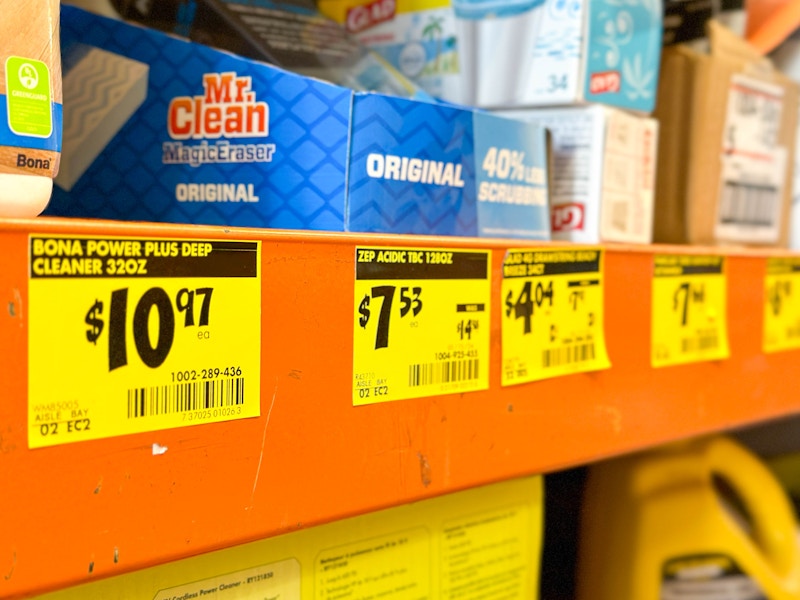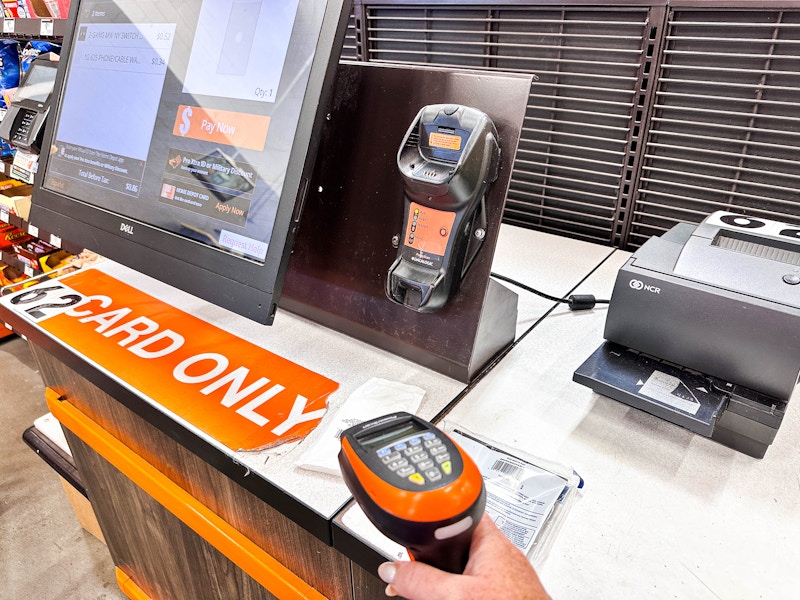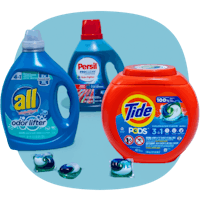If you follow clearance shoppers on social media, you’ve probably heard of Home Depot penny items.
Yes, penny items are real. No, Home Depot doesn’t endorse them with an official penny list. Technically, employees aren’t even supposed to sell items for a penny. But that doesn’t mean you won’t find these deals hiding on the clearance shelves.
Finding penny items isn't always as easy as stopping by the store. It can take a little bit of patience and legwork, but it's still one of my favorite Home Depot shopping hacks. Trust me, the thrill is worth the effort.
I'll show you the best tips and tricks for buying penny items at your local Home Depot. Plus, I'll cover how to read Home Depot clearance tags to increase your chances. Once you see that $0.01 price come up at self-checkout, you won't want to stop.
Before you start searching for pennies, use these links for more money-saving success:
See the best Home Depot deals happening right now.
Download The Krazy Coupon Lady app and “favorite” Home Depot to never miss a great deal.
What are Home Depot penny items?

Home Depot penny items are items that should have been removed from clearance shelves but weren’t. When clearance items don’t sell at their highest discount, employees take them off the shelves and out of the system. But sometimes, they miss a few items. And when you find these items and scan them at self checkout, you’ll see a $0.01 price point.
Lots of Home Depot clearance items can end up costing a penny. Wall sconces, Ryobi tools, flashlights, and step ladders are just a few of the items you could get for one cent. Finding them at your store just takes a little strategy and legwork.
Decoding Clearance Tags
Before you hunt for penny items, it helps to know what Home Depot clearance tags mean. It may not seem like it, but a few things on those yellow tags tell you a lot about the item.
Home Depot Clearance Tag Prices
Some Home Depot clearance tags directly relate to the item’s discount. For example:
Prices ending in “.06” — 25% off
Prices ending in “.04” — 50% off
Prices ending in “.03” — 75% off
Prices ending in “.02” — 90% off
Home Depot Clearance Tag Dates
The date on the clearance tag tells you when the item first went to clearance. This can give you an idea of when the item drops to a penny.
For example, items with prices ending in “.02”, “.03”, and “.04” usually drop to a penny 14 weeks after their clearance date. But that’s not always the case.
Clearance schedules are different at every store. Sometimes it can take six to eight months for an item to cost a penny. It all depends on your location and how quickly items move off the shelves.
How to Find Home Depot Penny Items at Your Store

Look for price tags ending in ".02", ".03", or ".04".
Items that end in these prices are most likely to be (or become) penny items. The closer the end price is to “.00,” the better.
As you browse the yellow clearance tags on the endcaps, keep an eye out for prices ending in these digits.
Check the price of penny items at self-checkout.
The only real way to tell if an item costs a penny is to scan the barcode.
But if you use the scanner in your Home Depot app, it won’t work. So you’ll have to take any possible penny items to self-checkout.
You can also scan penny items at the in-store price scanners. But only a few states require stores to have price scanners, so most locations don’t.
Scan the barcode on the item — not the clearance tag.
Always scan the UPC barcode and not the yellow clearance tag. The UPC is the barcode on the item's box or packaging (not the one on the sticker).
When you scan the clearance tag on a true penny item, it freezes the system and immediately alerts employees. In that case, they may take the item from you or ring it up for its last clearance price.
You can choose to make a fuss and fight to get your penny item back. But in my experience, kindness to employees is key when you’re a regular customer.
Check for new pennies regularly.
The more you check for penny items, the more likely you are to find them. Like I said, scanning the item is the only real way to tell if it’s a penny. Plus, some stores are better at moving clearance items off the shelves than others. So check those endcaps regularly to increase your chances.
FAQs: Home Depot Penny Items

What kinds of items can you get for a penny?
All kinds of stuff can end up costing a penny. You can score wall sconces, step ladders, power tools, screwdrivers, light bulbs, and more for just $0.01 at Home Depot.
Not all penny items are truly worth your while. But who doesn’t need light bulbs at some point in their lives?
Where do you find penny items at Home Depot?
Home Depot penny items mostly hide out on the clearance shelves. You’ll find clearance items on the endcaps of aisles around the middle of the store.
How do I check the price of a penny item?
There are two ways to check the price of penny items at Home Depot:
Take it to self-checkout and scan it
Scan it at an in-store price scanner (only available at select stores)
Are penny items the same at every Home Depot store?
No, penny items are different at every Home Depot store. You might find the same penny items at multiple stores, but don't count on it.
Some stores are more diligent about weeding through clearance shelves, which means penny items are less likely. Also, clearance schedules can vary from store to store. So the timing of penny items can be different depending on your location.
Do Home Depot employees have to sell you penny items?
No, Home Depot employees don’t have to sell you the item if it rings up for a penny. Technically, they should have already removed it from the shelves. The key to successfully buying penny items is to stay under the radar.
Related Reading:
































Tell us what you think